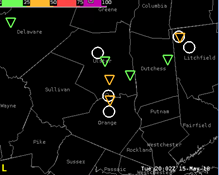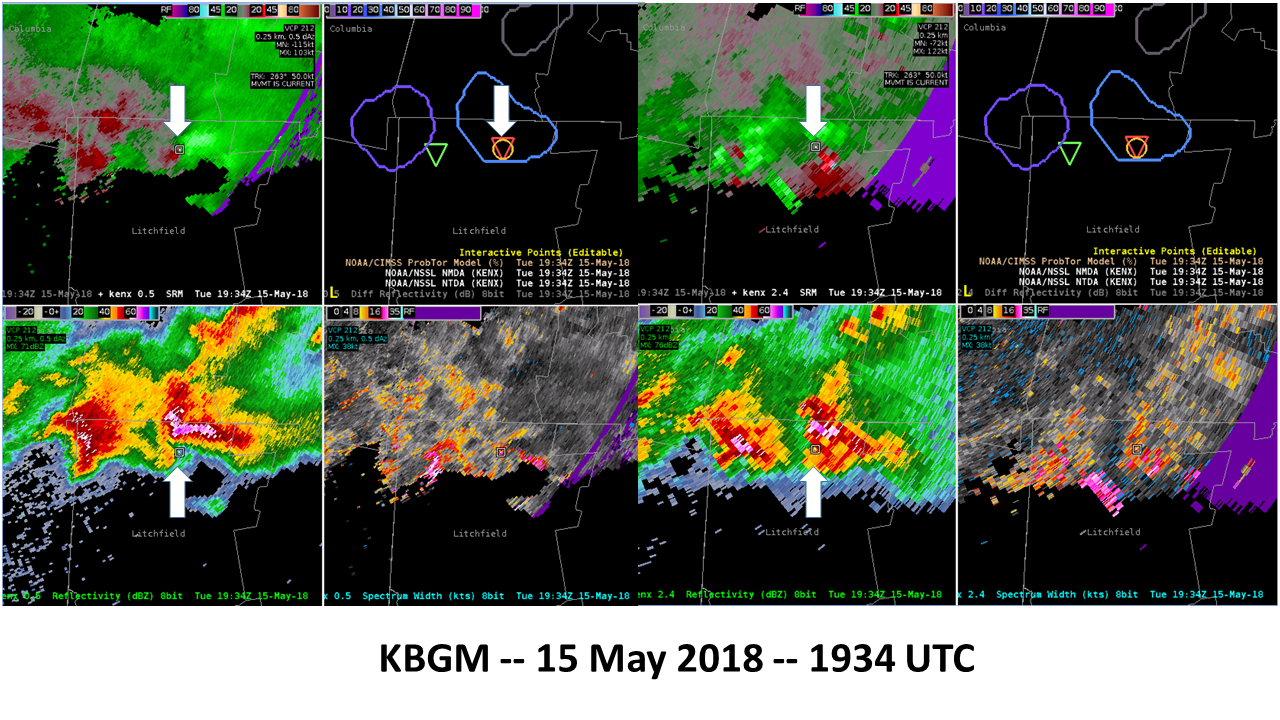-At the beginning of the event, while the TDA didn’t trigger high values (as tornadoes were being observed), it still ultimately added a lot of value. As a forecaster walking into that event, I probably would’ve thought that the chance for tornadoes as the cells were initially going up was around zero, so having guidance that showed that “hey look, something’s here” provided a lot of value added. So while the verification stats might not look great for this phase of the event, it potentially added more value than during sure-fire high end tornado warning scenarios. In those scenarios, the post-processed stats for the algorithms would look great, but they might not add as much value, since you’d have warnings out either way.

-It was also encouraging to see the high probs from both algorithms later in the event with the strongest supercell. As was brought up in discussions in our group, in that case those super high probs in both algorithms might have given you confidence to consider a higher tag on the warning (potentially the considerable tag).

-Squally McGusty

















